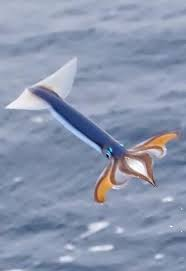according to NASA:
Figure A: In this enhanced-color version of the mosaic, the color bands of the image have been processed to improve visual contrast and accentuate color differences.
I believe the top image on that page is natural color.
If you look at nasa’s pages about this site (mount Washburn), the word “blue” never comes up. In fact they were more interested in a single white boulder that stood out to them. Another page for example.
I imagine that they’re just normal grey rocks that look blue because of all of the red
that was my first thought as well, but it’s actually just an altered image. I believe the top image in the first link is natural color. they just look dark gray/black even next to the orange regolith.
Not as neat as I thought. Thank you for actually looking into the details.
As a Brit I was watching the storm coverage in the USA yesterday and marveling at the number of locations named after European towns, and chuckling at the lack of imagination of the early immigrants.
Composed of 18 images, this natural-color mosaic shows a boulder field on “Mount Washburn” (named after a mountain in Wyoming) in Mars’ Jezero Crater. The Perseverance science team nicknamed the light-toned boulder with dark speckles near the center of the mosaic. “Atoko Point” (after a feature in the eastern Grand Canyon). The images were acquired by NASA’s Perseverance Mars rover on May 27, 2024, the 1,162nd Martian day, or sol, of the mission
But it turns out nothings really changed on the naming front… however I’ve never had to name a place so I can’t really claim I’d be any better!
People have always been like that. Alexandria comes to mind. Which Alexandria? Exactly.
A very good example of unimaginative or unoriginal naming. Although Alexandria is presumably named after Alexander the Great, rather than because the place reminded them of Alexandria.
Neat!



